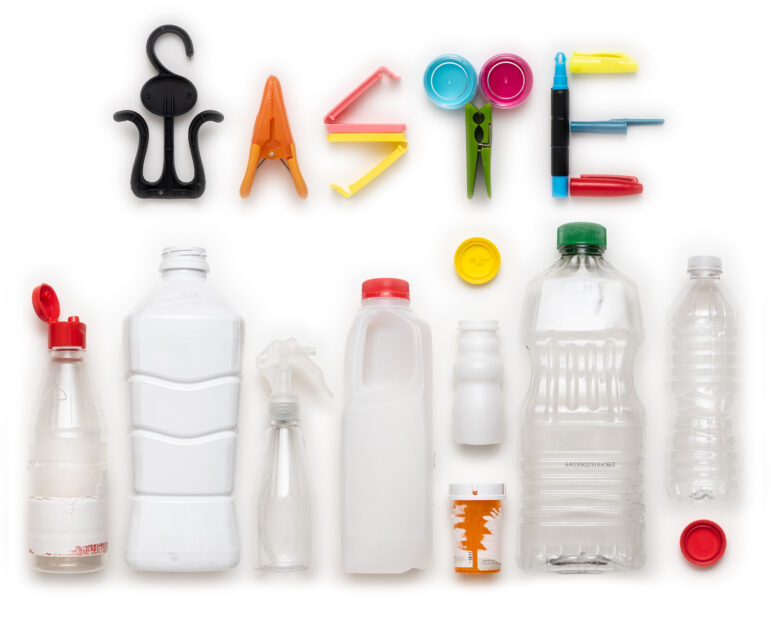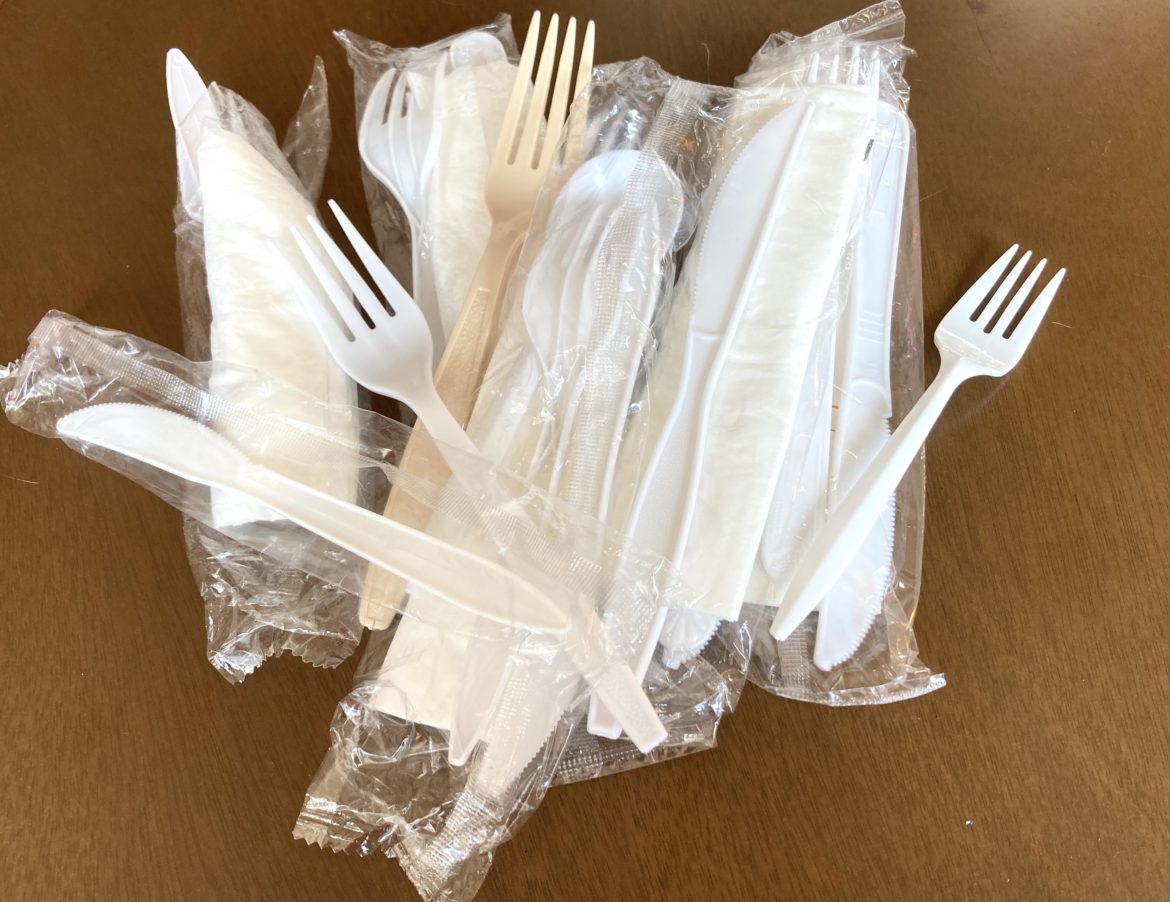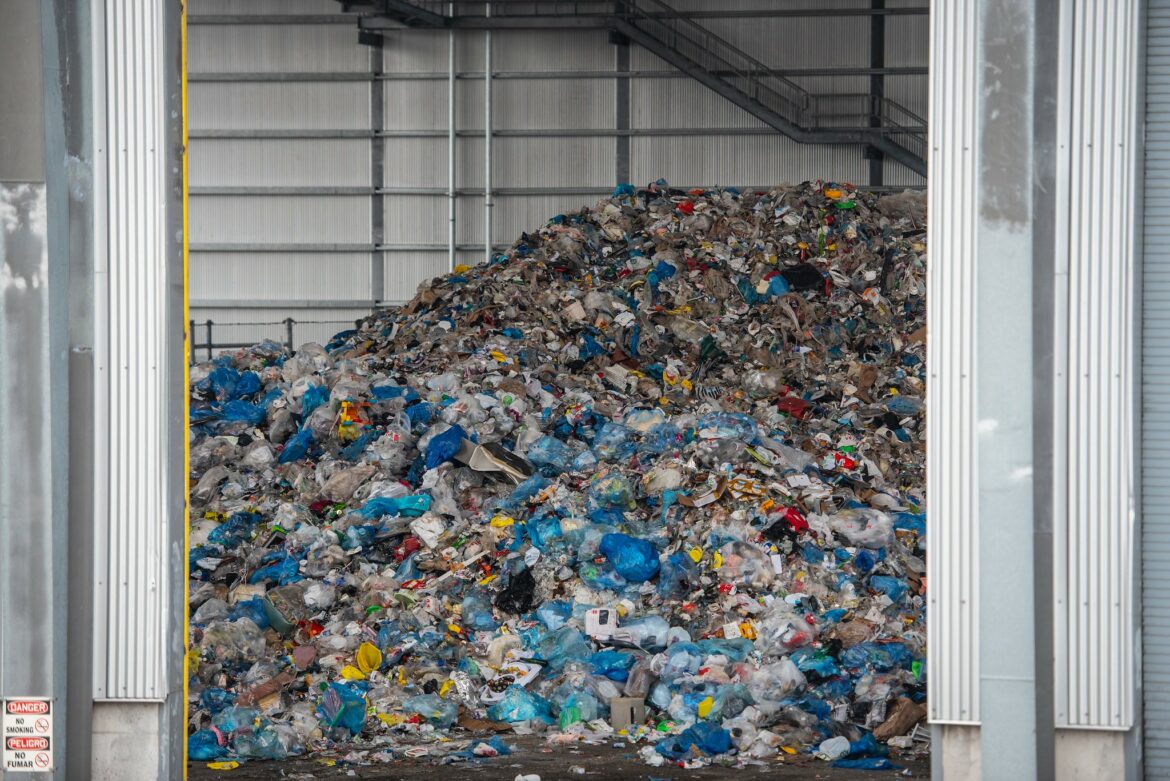As a bill that aims to drastically cut the use of plastic packaging gains momentum in Albany, the chemical industry has increased spending to stop it, pouring hundreds of thousands of dollars into the effort.

Adi Talwar
The Packaging Reduction and Recycling Infrastructure Act would target consumer brands by charging them a fee on the packaging they use. If they switch to packaging that is completely recyclable, they won’t need to pay up.The chemical industry is pouring hundreds of thousands of dollars into lobbying efforts to stop state lawmakers from passing a bill to cut plastic packaging by half over the next 12 years.
Known as the Packaging Reduction and Recycling Infrastructure Act, the legislation requires that companies redesign the products they sell in New York—where plastics account for approximately 14 percent of the municipal solid waste stream—to make them recyclable. It also prevents businesses from using the 15 worst toxic chemicals in packaging.
The bill would shift the burden of dealing with waste management away from taxpayers by requiring that the companies generating the trash pay for it instead. Consumer brands would be charged a fee for the packaging they use, and the proceeds would be funneled back to local governments.
“This will be a meaningful game changer. But that’s also why it’s been so challenging because we are trying to change many systems here that have profited by doing things the way they’ve always been done,” said one of the bill’s sponsors, State Sen. Peter Harckham.
The same legislation was on the table last year, but it failed to pass both houses and was met with strong opposition from chemical groups that make plastic products, despite backing from Gov. Kathy Hochul.
And now that the bill is gaining momentum in Albany—it has 80 co-sponsors in the Assembly and 34 in the Senate, and passed both chambers’ environmental committees last month—the chemical lobby is amping up efforts to stop it.
The American Chemistry Council (ACC), the main trade association for the petrochemical industry and the bill’s principal contender, paid lobbying firms nearly $300,000 this year and last to specifically tackle the legislation, public filings show. On top of that, they spent over half a million dollars to lobby a series of environmental bills that include the packaging act.
The chemical industry has joined forces with the business community to push back against the bill. The Business Council of New York State, which also registered to lobby against the bill, claims there are at least 120 organizations, from petrochemical companies to consumer brands and retail entities, organizing to take it down.
“We are not a formal coalition. We don’t call ourselves anything, but we meet regularly to discuss this vote and what our counter proposals are,” said Ken Pokalsky, the group’s vice president.
But lawmakers say they won’t be backing down either.
“I will do everything humanly possible to make certain that before this session ends, [this bill] will be sent to the governor,” the legislation’s co-sponsor, Assemblymember Deborah Glick, said to a crowd of supporters in Albany last week.
The debate over ‘chemical recycling’
Back in 2021, when another version of the packaging act was introduced, the American Chemistry Council had three lobbying firms working to get legislators on their side. Now, they have four. Last year they were pouring hundreds of thousands to lobby the bill.
This year they have renewed those efforts and increased their spending, state lobbying disclosure records show.
In 2023, they paid Greenberg Traurig an annual fee of $105,000 to tackle the legislation and increased that spending to $120,000 in 2024. Jem Associates made $35,000 last year and had their contract renewed by the Chemical Council for the same amount this year.
Two other firms the trade group hired, Long Point Strategic Advisors and Mirram Group, registered to lobby the bill together with other environmental legislation. Long Point received $225,000 from the Chemistry Council this year and last to fight the packaging act and three other bills, while Mirram Group cashed in at $340,000 for lobbying the packaging act and two other pieces of legislation on the ACC’s behalf.
“We report our lobbying activities in accordance with relevant requirements and much of that data is publicly available through State authorities,” an ACC spokesperson said in an email.
Last year, NY Focus reported that Gov. Kathy Hochul’s staff met with chemical giant Eastman and its lobbyists at least four times.

Jeanmarie Evelly
Single-use plastic cutlery, packaged in more plastic.But the governor’s office says she supports the waste reduction measure: she included the bill in past budget proposals, though it didn’t make it into the state’s final spending plans.
“Governor Hochul has prioritized reducing waste across the state, which is why she included the Waste Reduction and Recycling Infrastructure Act in her Executive Budget for the past two years. The Governor will review all legislation that passes both houses of the legislature,” a spokesperson said in an emailed statement.
The Chemical Council has said repeatedly that their main issue with the legislation is that it fails to include “advanced recycling”—the process of breaking down plastic by using extreme heat and chemical solvents—in its definition of what counts as reusable packaging.
“As the legislation is currently drafted, it bars New York from embracing science-based, advanced recycling technologies that could generate more than $500 million in new economic output annually for the state while displacing 880,000 tons of plastic created from fossil fuel resources each year,” Ross Eisenberg, president of America’s Plastic Makers and member of the ACC, said in an emailed statement.
But environmental experts say “advanced recycling” or “chemical recycling,” as it’s often called, is ineffective.
“The process is so energy-intensive and inefficient that most of the plastic waste is turned into hazardous waste and fuel products,” said Jennifer Congdon, deputy director at the environmental non-profit Beyond Plastics.
Because chemical recycling facilities aren’t able to convert much of that dissolved plastic into new, raw plastic material that can be reused, they end up turning it into fuel instead and selling it for a profit. And that’s terrible for the environment: plastics are made of fossil fuels and carry a hefty carbon footprint, emitting 3.4 percent of the world’s greenhouse gas emissions.
There are 11 facilities dedicated to chemical recycling in the U.S—although one recently announced it will be shutting down. Only two are dedicated to plastic production, according to Beyond Plastics. Three only make fuels, and six make a combination of fuels, chemicals, and plastic raw materials.
The small amount of plastic that can get recycled through this chemical process needs to be blended with 98 percent virgin fossil fuels, which in the end, critics say, only produces more plastic instead of cutting back on it.
“It’s not real recycling and It’s not a viable or environmentally sound solution to the plastic pollution crisis. It distracts from the need to reduce the amount of plastic that we’re using in these careless and reckless ways,” said Congdon.
Plastic recycling failures
Plastics can cause a wide range of health issues like birth defects, lung growth and childhood cancer. It also winds up in the human body, as recent studies have found the material in placenta and blood.
And as it turns out, most plastic can’t be recycled. As of 2021, the U.S. recycling rate for plastic is estimated to be only 5 to 6 percent, a report published by Beyond Plastics found.
Recycling plastic is difficult for several reasons. For one, there aren’t enough businesses that buy and use recyclable materials to make new products.
But most importantly, different types of plastic can’t be recycled together and they come in thousands of different colors and materials. A clear squishy ketchup bottle, for instance, can’t be recycled with a hard, brightly colored detergent bottle. And separating all of them into the right categories of raw materials at a recycling facility is both impractical and expensive.
In the end, most of the material ends up in landfills, incinerators, or the environment: 33 billion pounds of plastic pollution enters the ocean each year worldwide.
“So by definition, most plastic never gets recycled. It’s kind of an engineering issue. And you know, who knows this better than anyone is the plastic industry,” said Judith Enck, founder of Beyond Plastics and a former regional administrator at the U.S. Environmental Protection Agency (EPA).
A report launched last month by the Center for Climate Integrity, analyzing hundreds of industry documents and reports dating back to the 1950s, reveals that “the industry knew” that recycling “was not a viable solution.” But because the public was more concerned about plastic waste and its impact on the environment beginning around the 1980s, “the plastics industry began to lie about the viability of recycling,” the report says.

Michael Appleton/Mayoral Photography Office
A mountain of plastic waste at a municipal recycling in Sunset Park, Brooklyn.For a long time, most people believed it. But public perspective began to change around 2015, the report points out, when a “sudden public awareness of microplastics, combined with increasing visibility of ocean plastics and their impacts on wildlife, led to visceral public backlash.”
“Now [the industry is] promoting this false solution called chemical recycling. And the problem is, it never works and it’s very polluting,” said Enck. “So [the chemical industry] is doing everything they can to confuse legislators with this issue of chemical recycling because they don’t want [the packaging act] to pass.”
Chemical companies in the U.S. make over $370 billion a year selling these products, and plastic production is expected to double in the next 20 years, according to the Center for Climate Integrity.
“They see that we’re moving away from the use of fossil fuels. So if anything, they’re going to redouble their effort to produce more plastic,” Assemblymember Deborah Glick told City Limits. “We live in a disposable society, and we’re saying that with certain things, we can’t afford to be disposable.”
Bad for business
The chemical industry has been teaming up with the business community to make a stronger case against Glick’s bill.
The legislation will target consumer brands by charging them a fee on the packaging they use. If they switch to packaging that is completely recyclable, they won’t need to pay up.
Under the legislation, the state’s Department of Environmental Conservation will be in charge of coming up with the fees for each packaging type and enforcing the rules they create. A non-profit entity called the Producer Responsibility Organization (PRO) will be created to collect the funds and redistribute them to local municipalities to pay for recycling infrastructure and offset the cost of managing waste collection.
Lawmakers guarantee the bill will funnel anywhere between $250 million to $450 million* a year back to local governments statewide.
“If you buy a box of Cheerios, you just bought two layers of trash: the box and the plastic holding the cereal. And taxpayers are responsible for the burden of managing that trash because our tax dollars go into curbside pickup and different municipal recycling programs,” said Kate Donovan, environmental health expert and regional lead at National Resources Defense Council (NRDC), which is advocating for the bill.
“So this program is shifting the responsibility onto the polluters, which are the companies packaging the products with materials that pollute,” she concluded.
The business community, however, isn’t thrilled about the idea of shouldering the costs.
“The consumer is benefitting from buying our products, so we think there should be some sharing of costs,” said Ken Pokalsky, vice president of the Business Council of New York State.
The Council says the bill will also affect product distribution and increase costs for consumers. A press release circulated by the association cites a study that is yet to be released by York University in Canada that claims the bill would cost New Yorkers more than $5.8 billion over the next five years.
“Companies are going to have to dramatically change how they sell things,” Pokalsky said. “It may change the amounts they sell or cause them to eliminate some product lines because this bill also bans certain materials that allow companies to efficiently and safely package food products.”
Both the Business Council and the chemical industry have been calling the bill unsafe, and that food products at the supermarket will go bad if not packaged with certain chemicals.
Ross Eisenberg, president of America’s Plastic Makers, said in an email that the legislation “presents serious risks to our food supply, especially in vulnerable communities, impacting a wide range of products found on grocery shelves.”
But the bill’s Senate sponsor pushed back on that claim.
“Nothing in this bill would supersede food safety of FDA food requirements. Federal law always takes precedent,” said Harckham.
Companies can also apply for a waiver that allows them to keep their packaging as is for the next three years if they can prove that their product needs to be sold in a specific type of container.
“Nothing in this bill says you can’t sell 16 ounces of shampoo, you have to sell eight, or vice versa,” Sen. Harckham told City Limits. “What this bill is saying is you don’t need to sell shampoo in a bottle shaped like the Eiffel tower that contains harmful toxins and colors that can’t be recycled.”
The ultimate goal, lawmakers say, is to get to the source of New York’s massive plastic waste problem: 20,000 tons of plastic foodware alone are discarded annually in the city, according to the NRDC.
“We’re drowning in waste,” Harckham said. “And so we’re saying to everybody: we have a crisis here and everybody needs to do their part. Let’s turn the Titanic around.”
*This story has been updated since original publication to correct the estimated high end of savings lawmakers expect the bill to generate. It is $450 million, not billion. City Limits regrets the error.
To reach the reporter behind this story, contact Mariana@citylimits.flywheelstaging.com. To reach the editor, contact Jeanmarie@citylimits.flywheelstaging.com.
Want to republish this story? Find City Limits’ reprint policy here.









One thought on “Chemical Industry Amps Up Lobbying to Block New York’s Waste Reduction Bill”
The answer is a new form of incineration: plasma gasification. Actually, not that new; it’s been used for 10+ years: https://www.netl.doe.gov/research/Coal/energy-systems/gasification/gasifipedia/westinghouse
Plasma Gasification and its Potential Advantages
WPC has been developing plasma gasification technology to treat industrial and municipal solid wastes (MSW) over the last decade, and recently has been investigating the application of their plasma technology to gasify coal. They believe their technology can be demonstrated to gasify coal in an ambient pressure, plasma-fired reactor that can be retrofitted into existing power plants and/or installed as a new facility, with the following potential benefits over a pulverized coal power and/or conventional gasification plant:
Greater feed flexibility enabling coal, coal fines, mining waste, lignite, and other opportunity fuels (e.g., biomass and MSW) to be used as fuel without the need for pulverizing
Air blown and thus an oxygen plant is not required
High availability (>90%)
High conversion (>99%) organic matter to synthesis gas (syngas)
No tar in syngas; syngas of approximately 140 Btu/scf for air-blown design suitable for syngas combustion turbine operation after gas cleanup
No char, ash or residual carbon; only producing a glassy slag with beneficial value
Compliant with EPA New Source emissions standards for nitrogen oxide (NOx), sulfur oxide (SOx) particulates, etc.
Higher thermal efficiency
Lower carbon dioxide (CO2) emissions
Low estimated capital and operations and maintenance (O&M) costs
According to WPC’s estimation, only 2 to 5% of the total energy input into their gasification system is consumed by the plasma torch, and that 80% of the total energy input in the feed can be recovered in the produced syngas.
====
It’s sustainable, recycling the energy used too, mostly clean – even the glass slag residue can be reused, and it can convert almost everything so no need to sort 1000s of kinds o fplastics, or metals too.